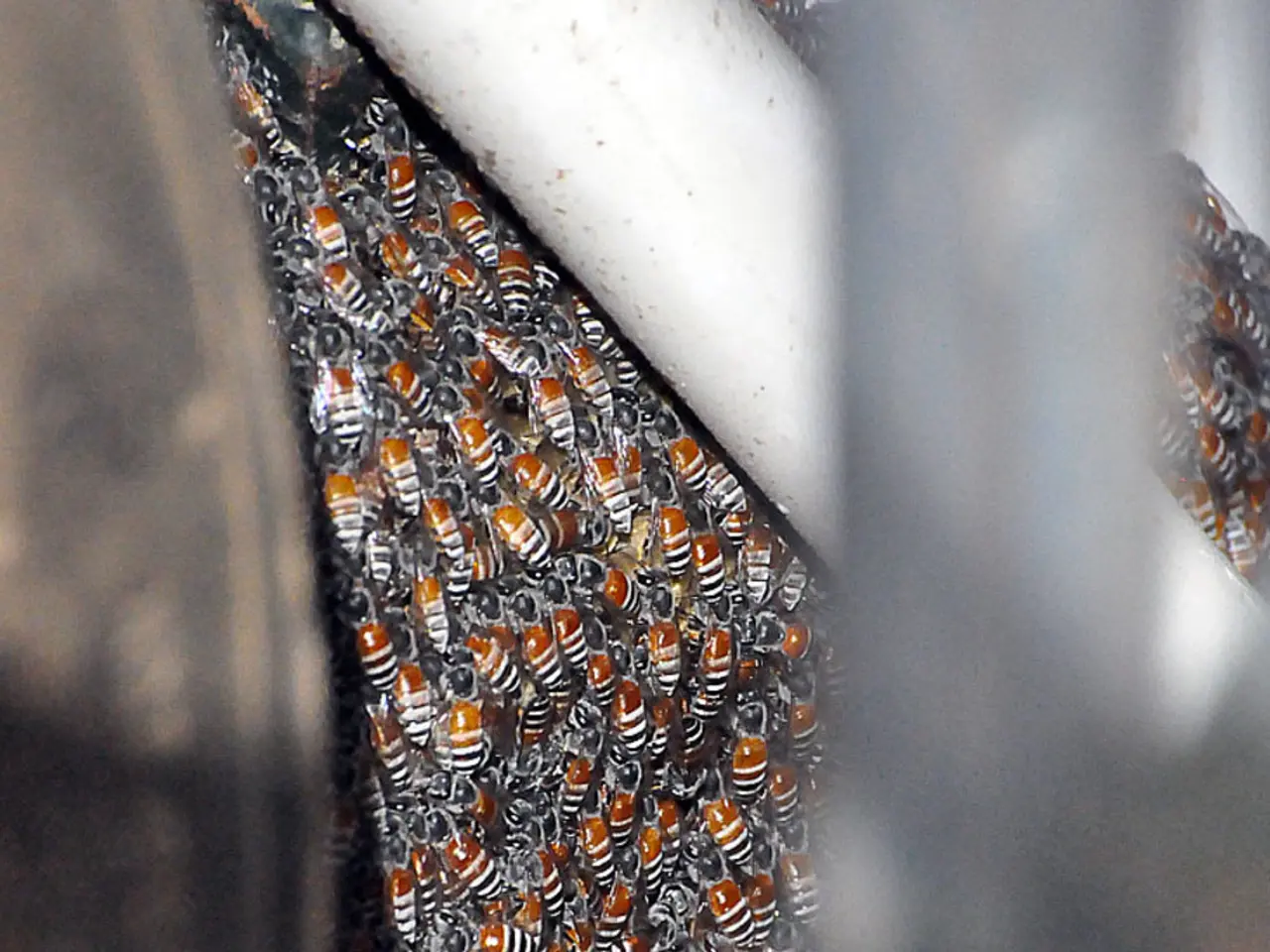Congress Takes Steps to Prevent Defense Department from Scrapping E-7 Wedgetail Program
In the world of military aviation, the E-7 Wedgetail development program is currently facing a significant threat of cancellation by the Pentagon due to cost overruns and survivability concerns. However, a recent intervention by Congress has offered a lifeline to this program.
The House Armed Services Committee has taken a decisive step by adding $600 million to the draft National Defense Authorization Act for Fiscal Year 2026. This allocation aims to continue the rapid prototyping of the Air Force-specific E-7 variant and prevent the Defense Department from ending Boeing's E-7 prototyping contract or funding to terminate production.
These congressional actions reflect a clear opposition to the Pentagon's plan to cancel the Air Force's E-7 acquisition. Instead, the Pentagon is considering relying on Navy E-2 Hawkeye aircraft and satellite systems as interim or alternative solutions.
Boeing, the company responsible for the E-7 Wedgetail's development, is preparing two prototype E-7s, with delivery expected in 2028. These prototypes are intended to enable final design and production decisions. Despite the Pentagon’s cancellation plans, Boeing leadership remains confident that the Air Force E-7 program will continue. They emphasise that space-based systems cannot yet replace the E-7’s airborne warning capabilities.
Interestingly, allied programs such as the UK are progressing with their own E-7 Wedgetail aircraft despite the US Air Force’s cancellation move.
The House Rules Committee has advanced an $831.5 billion defense spending package for 2026, which includes a provision that bars the military from using federal dollars to pause or end pursuit of a Wedgetail fleet. However, this amendment was left out of the final package because it wasn't deemed "in order" to include with the bill.
As we move forward, it remains unclear whether the Senate will back the decision to end the E-7 buy. The Senate appropriators haven't yet released a Pentagon budget blueprint for 2026.
Proponents of the new E-7 fleet argue that space-based tracking is not yet mature enough to meet the U.S. military's short-term needs. The House proposal puts $500 million toward the Wedgetail effort to sustain airborne early warning capability while new options mature.
This ongoing saga between the Pentagon and Congress could become one of the examples of the Pentagon and the executive branch's frequent struggles to gain congressional approval for major inventory changes. The House Armed Services Committee has released legislation last week green-lighting $799.7 million to continue prototyping the E-7 program.
The E-7 Wedgetail, along with its predecessor, the E-3 Airborne Warning and Control System, can detect incoming missiles and enemy aircraft from a distance and direct the movement of other air assets accordingly. The House Armed Services Committee has also added an amendment to the annual defense policy bill that would prevent the Defense Department from ending the Air Force's E-7 Wedgetail development program.
The Air & Space Forces Association, an organisation that honours and supports Airmen, Guardians, and their families, has not made any official statement regarding the E-7 Wedgetail program. However, their mission aligns with the importance of maintaining the airborne early warning capability that the E-7 Wedgetail provides.
As the situation unfolds, it's clear that the E-7 Wedgetail program faces uncertainty at the Department of Defense level but enjoys strong congressional support aimed at preserving its development and prototyping phase, keeping the program nominally alive as of mid-2025.
- The House Armed Services Committee has added funds to continue the rapid prototyping of the Air Force-specific E-7 variant, aiming to prevent the Defense Department from ending Boeing's E-7 prototyping contract.
- The House Rules Committee has advanced an defense spending package for 2026, which includes a provision that bars the military from using federal dollars to pause or end the pursuit of a Wedgetail fleet.
- Proponents of the new E-7 fleet argue that space-based tracking is not yet mature enough to meet the U.S. military's short-term needs, and the House proposal puts $500 million towards the Wedgetail effort to sustain airborne early warning capability.
- The House Armed Services Committee has also added an amendment to the annual defense policy bill that would prevent the Defense Department from ending the Air Force's E-7 Wedgetail development program.
- The E-7 Wedgetail program, despite facing uncertainty at the Department of Defense level, enjoys strong congressional support aimed at preserving its development and prototyping phase, keeping the program nominally alive as of mid-2025.




